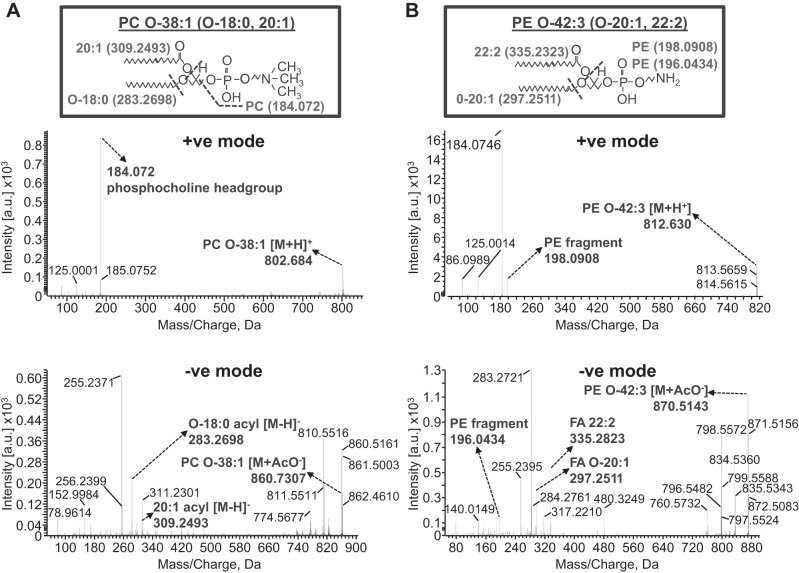Fig. 3.
SWATH-MS/MSALL in positive mode (top) and negative mode (bottom) showing the ion fragments used to identify PC O-38:1 (PC O-18:0/20:1; A) and PE O-42:3 (O-20:1, 22:2; B). For PC O-38:1, the protonated parent ion mass in positive mode is 802.684 m/z (expected mass 802.668 m/z), and 184.072 m/z (expected mass 184.074 m/z) is the phosphocholine fragment ion. In negative mode, the parent ion acetate adduct ion mass is 860.731 m/z (expected mass 860.675 m/z), and two fragment ions corresponding to 18:0 and 20:1 acyl chains are 283.270 m/z (expected mass 283.264 m/z) and 309.249 m/z (expected mass 309.279 m/z), respectively. B: for PE O-42:3 (O-20:1, 22:2), the protonated parent ion mass in positive mode is 812.630 m/z (expected mass 812.653 m/z), and 198.0908 m/z (expected mass 198.10 m/z) is the PE fragment (196.0434 m/z in negative mode spectrum below). In negative mode, the parent ion acetate adduct ion mass is 870.5143 m/z (expected mass 870.560 m/z), and two fragment ions corresponding to O-20:1 and 22:2 acyl chains are 297.2511 m/z (expected mass 297.301 m/z) and 335.2823 m/z (expected mass 335.296 m/z), respectively.

